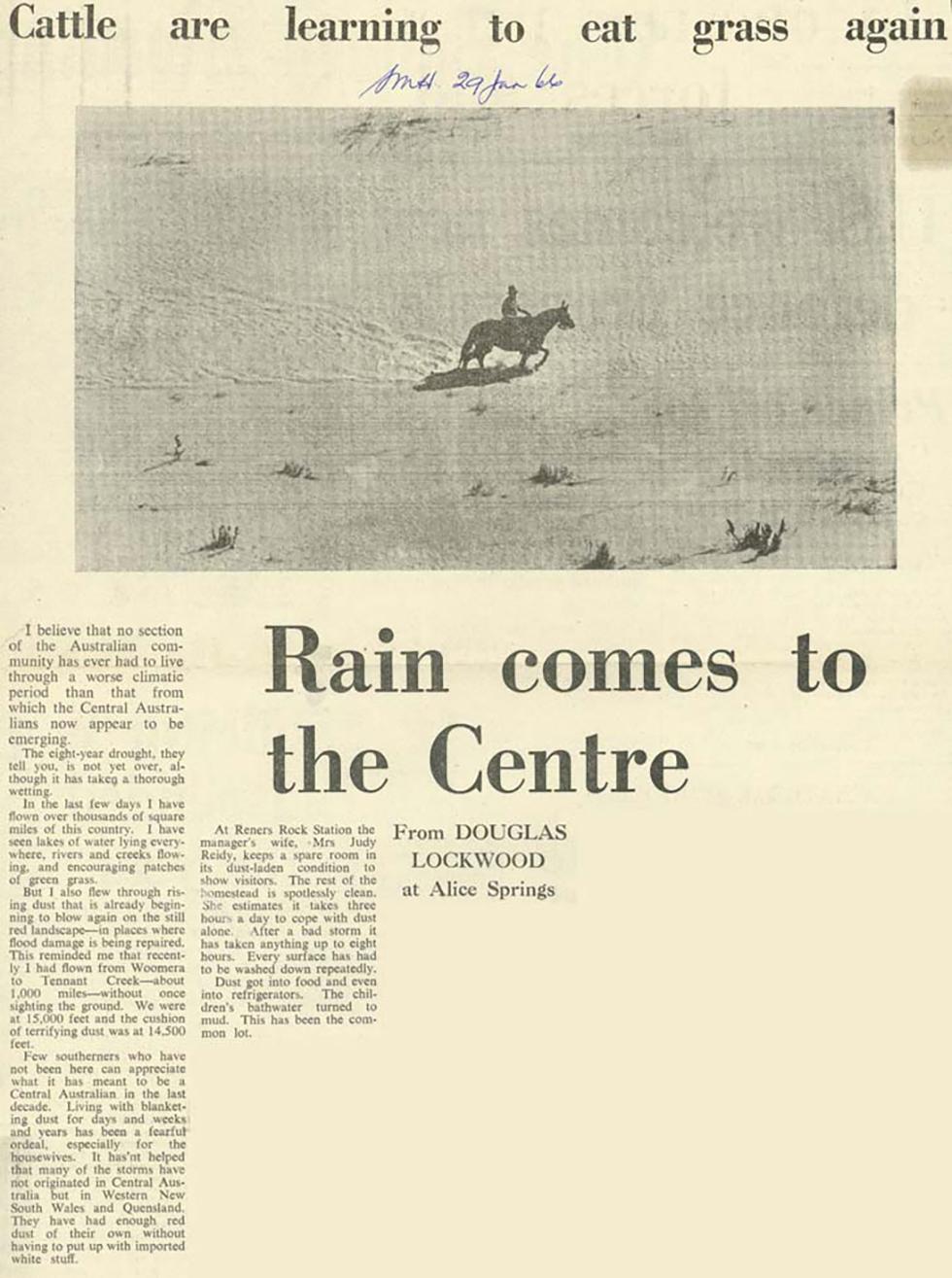
Extract from a newspaper article
Aboriginal and Torres Strait Islander people should be aware that the National Archives' website and collection contain the names, images and voices of people who have died.
Some records include terms and views that are not appropriate today. They reflect the period in which they were created and are not the views of the National Archives.


Extract from a newspaper article
[Heading in large text:] Cattle are learning to eat grass again
[Handwritten annotation in blue ink:] SMH [possibly 'Sydney Morning Herald'] 29 Jan 66
[Black and white photo of a man on horseback wading through a large expanse of shallow water.
[Headline:] Rain comes to the Centre
From DOUGLAS LOCKWOOD at Alice Springs
I believe that no section of the Australian community has ever had live through a worse climatic period than that from which the Central Australians now appear to be emerging.
The eight-year drought, they tell you, is not yet over, although it has taken a thorough wetting.
In the last few days I have flown over thousands of square miles of this country. I have seen lakes of water lying everywhere, rivers and creeks flowing, and encouraging patches of green grass.
But I also flew through rising dust that is already beginning to blow again on the still red landscape – in places where flood damage is being repaired. This reminded me that recently I had flown from Woomera to Tennant Creek – about 1,000 miles – without once sighting the ground. We were at 15,000 feet and the cushion of terrifying dust that was at 14,500 feet.
Few southerners who have not been here can appreciate what it has meant to be a Central Australian in the last decade. Living with blanketing dust for days and weeks and years has been a fearful ordeal, especially for the housewives. It has'nt [sic] helped that many of the storms have not originated in Central Australia but in Western New South Wales and Queensland. They have had enough red dust of their own without having to put up with imported white stuff.
At Reners Rock Station the manager's wife, Mrs Judy Reidy, keeps a spare room in its dust-laden condition to show visitors. The rest of the homestead is spotlessly clean. She estimates it takes three hours a day to cope with dust alone. After a bad storm it has taken anything up to eight hours. Every surface has had to be washed down repeatedly.
Dust got into food and even into refrigerators. The children's bathwater turned to mud. This has been the common lot.
Learn how to interpret primary sources, use our collection and more.
